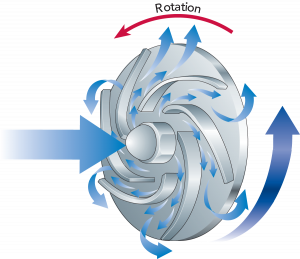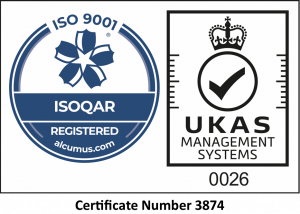There are two key components within a centrifugal pump, a static part which will be made up of casing, cover and bearings and a rotating part which will be made out of a shaft and an impeller. An impeller is round and comprised of a series of curved vanes, it is always immersed in water. When the impeller starts to rotate, it rotates the fluid surrounding it which imparts a centrifugal force to the water particles moving them out. The rotational energy that is transferred to the water and as such the pressure and kinetic energy will be higher as the fluid leaves the pump. Every centrifugal pump has a characteristic curve that illustrates the relation between the rate of and pressure against which the device will pump.

Advantages
The simplicity of their design means that Centrifugal Pumps only require low maintenance and are generally considered to be a durable design. They can be mounted either horizontally or vertically and can be used to deliver a wide range of different media. Centrifugal pumps have a high efficiency with a low power consumption.
Disadvantages
Centrifugal Pumps are not generally suited for high velocity applications, and due to the fact that they rely on rotation rather than suction, they will have to primed in order to work. Centrifugal Pumps are vulnerable to cavitation, a form of corrosion which can damage the impeller surfaces and pump casing.
Bronte Precision have made a wide variety of pump components for industrial applications. We can machine from solid or work from Castings and have a niche in large sized and complex components. Common parts we have machined before include impellors, shafts, casings, seals and housing. We are ISO 9001:2015 certified and deliver across the UK.






